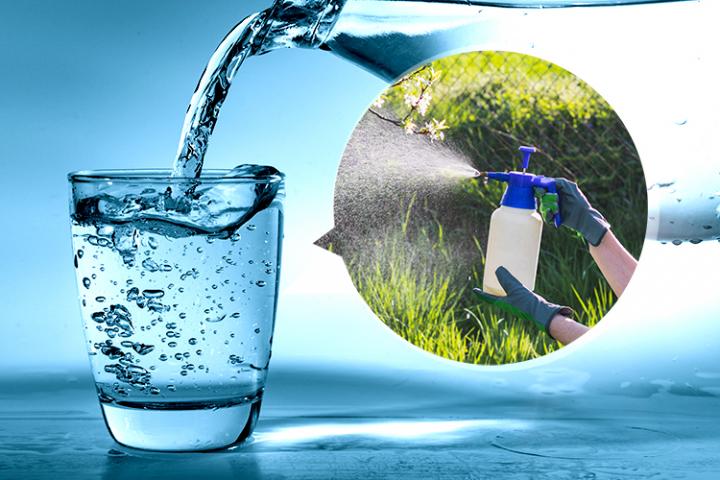
Credit: Institute of Industrial Science, the University of Tokyo
A new polymer-based, solid-state transistor can more sensitively detect a weed killer in drinking water than existing hydrogel-based fluorescence sensor chips. The details were published in Chemistry-A European Journal.
The sensor is a specially designed organic thin-film transistor based on semiconducting molecules of carboxylate-functionalized polythiophene (P3CPT). What’s special about this particular device is that, unlike other conjugated polymer-based sensors, this one is a solid-state device that can conduct an electric current when placed inside a fluid.
The device, designed by Tsuyoshi Minami of The University of Tokyo’s Institute of Industrial Science and colleagues, works by adding copper ions, which bind to the P3CPT molecules. When the device is placed in water that contains even the smallest amount of the herbicide glyphosate, the copper ions leave the P3CPT molecules to attach to the glyphosate molecules. This causes a detectable reduction in the flow of electric current through the device. Glyphosate is a commonly used weed killer in agriculture, and there are concerns that its presence in drinking water can be harmful to human health.
The scientists found that the device was so sensitive that it could detect as low as 0.26 parts per million of glyphosate in drinking water. The team compared their new device to a conventional fluorescence sensor chip, which was only capable of detecting down to 0.95 parts per million of glyphosate. To put this into perspective, the maximum allowable amount of glyphosate in drinking water, according to the United States Environmental Protection Agency, is 0.7 parts per million.
The scientists believe that the sensitivity of their device boils down to interactions occurring within individual polymer molecules and between neighbouring ones. Commonly used fluorescence sensors depend solely on interactions occurring within individual molecules.
“Our device could be a novel solid-state platform for sensing target molecules in aqueous media,” says Minami. The researchers are currently working on further developing their polythiophene-based sensors.
###
About Institute of Industrial Science (IIS), the University of Tokyo
Institute of Industrial Science (IIS), the University of Tokyo is one of the largest university-attached research institutes in Japan.
More than 120 research laboratories, each headed by a faculty member, comprise IIS, with more than 1,000 members including approximately 300 staff and 700 students actively engaged in education and research. Our activities cover almost all the areas of engineering disciplines. Since its foundation in 1949, IIS has worked to bridge the huge gaps that exist between academic disciplines and real-world applications.
Media Contact
Tsuyoshi Minami
[email protected]
Original Source
https:/
Related Journal Article
http://dx.




